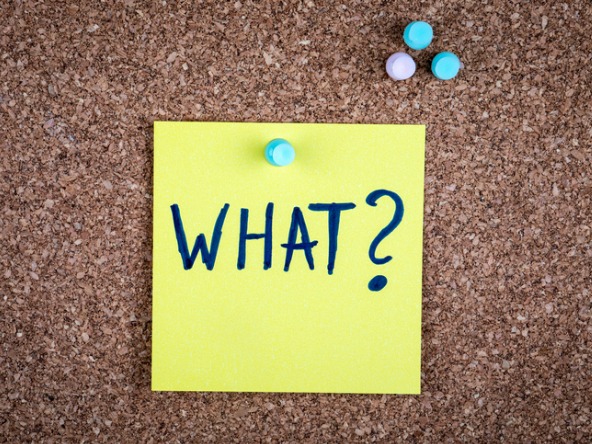The fatal attraction of marketing jargon

The widespread shift to homeworking over the past 24 months has had many publicised effects, including a later start to the working day, less collaboration and more emails sent out of hours.
One of the less discussed outcomes is that jargon has become much more noticeable. With employees interacting on Zoom, sitting in their living rooms and wearing casual clothes, the absurdity of office-speak has become uncomfortably clear.
The awkward charade of jargon existed before the pandemic, and its problems have long been noted. For decades, employees have found it silly, writers have called it bad practice, and business leaders have criticised it for causing confusion.
Despite the negativity that surrounds jargon, the marketing industry continues to use it. It shows no sign of decline. If anything, it’s becoming more prevalent. The calls to ‘touch base’ and ‘become agile’ are louder post-pandemic than ever before.
All this raises a puzzle. Why is it that marketing – an industry which prides itself on human connection and effective communication – persists in using jargon?
Defining jargon
In this discussion, it’s important to point out that the focus isn’t technical terminology: specific language (such as KPI) that has a set meaning. This language is often useful because it reduces the cognitive effort required by the audience and makes communication more efficient.
Instead, the subject of this article is vague language that has no clear and obvious meaning. This type of language conceals a message rather than revealing it; complicating ideas rather than simplifying them. It’s found in ‘engagement’, ‘cut through’, ‘content’, ‘disrupt’, ‘move the needle’ and other similar terms.
A convenient substitute for lazy thinking
If jargon makes our messages less clear, why do we default to using it?
Firstly, we rely on it when we want to make a difficult truth seem more palatable. For example, ‘restructuring and optimising capital allocation’ sounds much better than ‘we’re firing people’.
Secondly, jargon is a tool that helps us build a sense of belonging. Just as young people use slang to show they’re part of a community, marketers use jargon to signal they’re part of the industry. This explains studies showing that junior employees tend to use jargon more than senior employees; their group membership is less secure so they use jargon to compensate.
These two motivations for using jargon are often intentional and conscious. But there’s a third motivation which is more subtle and, as a result, easier to overlook. That is, jargon acts as a way of hiding lazy thinking. It provides a helpful fallback when we don’t have a coherent point of view. The vagueness of jargon forces the audience to unpack the meaning of what we’re saying, instead of us doing it for them.
For example, saying we want our online advertising to ‘drive engagement’ could mean achieving a variety of different objectives including views, comments, clicks, or shares.
When we use the phrase ‘create a disruptive product’, we could mean a product that is more accessible, one that is cheaper, or one that uses new technology. In these cases, the ambiguity of jargon allows for imprecise and incomplete thinking. We can use the words without knowing what we really mean.
Given it’s embarrassing to admit we don’t have a pithy point to make, and that difficult problems often require good quality thinking to solve them, this screening ability of jargon makes it highly valuable.
Now the puzzle at the start of this article makes more sense. Jargon isn’t prevalent despite its obscurity. It’s prevalent because of it.
Marketing: the perfect home for jargon
Jargon’s value makes it popular in many corporate settings, but the nature of marketing provides an ideal place for jargon to thrive. Marketing is, at its core, the business of adding value to products – making them seem more desirable to consumers. When it’s the job of marketers to inflate products beyond their basic worth, it’s natural they want to do the same to words.
This inflation comes in different forms. Some marketers believe they don’t sell products – instead they sell emotions. Charles Revson, the founder of Revlon, once proclaimed that his company’s skin cream was “hope in a jar”. If the marketer’s task is to move consumers and not just persuade them, it’s little surprise that the emotive and evocative nature of jargon is so appealing.
Other marketers believe their main job is no longer selling at all. They believe their role has shifted from making money to creating positive change in society. It’s a shift that has become especially prominent since Covid-19: a Warc study showed that 78% of marketers believe social purpose is more important as a result of the pandemic. In this context, brands are seen as vehicles for solving racial inequality, beauty stereotypes and other social issues. Once again, this elevated role is complemented by elevated language.
Jargon is serious business
It’s unhelpful, as some do, to view jargon as a harmless game that people love to hate. Even when it’s used internally – among marketers who are aware of the terms – the imprecision of jargon has a negative impact. Marketers regularly need to report findings to colleagues, suggest improvements to suppliers, and brief agencies. All these tasks are hindered by ambiguous communication.
But the fundamental problems arise externally. Marketers need consumers to understand the product and experience they’re offering. This requires the plain language of consumers, rather than the complicated jargon they use at work. Without this, marketers alienate their audiences and lose the consumer connection they strive for.
This is visible in company mission statements. For example, WeWork says: “We are a community company committed to maximum global impact. Our mission is to elevate the world’s consciousness.” Such a jargon-rich description makes it difficult for consumers to understand what the company stands for and identify with their ambitions.
Company websites – in theory a source of practical information – suffer from the same problem. A 2019 report found that 58% of what appears on US banks’ websites is too complex for the average American. The excessive use of jargon puts the writing at year 11 level, while the average American reads at year 9 level.
For many consumers, advertising is the primary interaction they have with a brand. But when they see adverts flaunting promises like “Reimagine your experience” (Galaxy Book Pro) and “Dare forward” (Porsche), the result is usually confusion rather than connection.
A call to pause and think
Next time you notice you’re using jargon, ask yourself one question: what do I really mean here? It might seem unnatural, and will require time and effort to get to a concise answer, but it will force you to have a real understanding of what you’re trying to say. Your audiences will thank you for this too – finding your messages easier to understand.
Blaise Pascal is quoted as saying: “I would have written a shorter letter, but I did not have the time.” In the context of jargon, this can be updated: “I would have used simple language, but I didn’t know what I wanted to say.”
Sam Salama is senior research executive at Basis Research.

We hope you enjoyed this article.
Research Live is published by MRS.
The Market Research Society (MRS) exists to promote and protect the research sector, showcasing how research delivers impact for businesses and government.
Members of MRS enjoy many benefits including tailoured policy guidance, discounts on training and conferences, and access to member-only content.
For example, there's an archive of winning case studies from over a decade of MRS Awards.
Find out more about the benefits of joining MRS here.














1 Comment
Annie Pettit
4 years ago
I suspect a lot of people don't realize when they're using 'lazy' idioms, slang, expressions and more. I find it's much easier to catch it in writing when I can physically strike out a phrase and see that the sentence still makes sense or, alternatively, when I read a phrase literally and see that it makes no sense. There is definitely a learning curve (expression intended!) for identifying them and knowing when to stop using them.
Like Reply Report